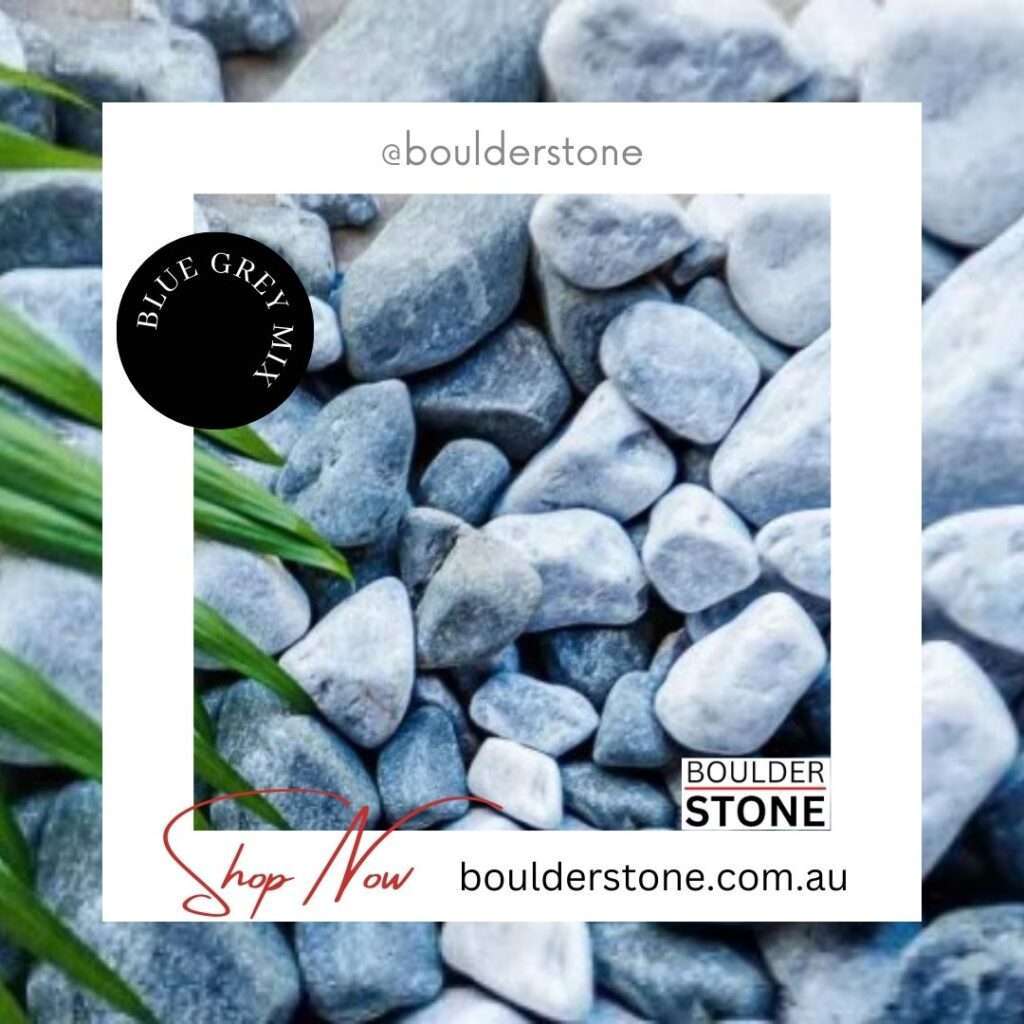Pebbles to Boulders | Whether you’re a seasoned architect, an enthusiastic landscaper, or a DIY homeowner, choosing the right type of stone for your project is essential for both aesthetics and functionality. Additionally, the stones come in all shapes and sizes and from tiny pebbles to boulders. Also, each offering unique benefits and visual appeal. Furthermore, in this guide, we will delve into the world of stones, exploring their various types, uses, and tips for selecting the perfect stone for your needs.
Understanding the Basics: Types of Stones – Pebbles to Boulders
1. Pebbles
Additionally, pebbles are small and rounded stones typically found on beaches and riverbeds. Also, their smooth texture and varied colours make them a popular choice for decorative purposes. However, their common uses for pebbles include:
-
- Garden paths and walkways: Pebbles provide a natural, serene look that complements any garden.
-
- Water features: They add a polished touch to ponds, fountains, and waterfalls.
-
- Planters and flower beds: Pebbles can be used as mulch to retain moisture and enhance visual appeal.
2. Aggregate
Aggregate consists of small, angular stones and is often used for practical purposes. It’s rough texture provides excellent drainage and stability. Common uses for Aggregate include:
-
- Driveways and parking areas: Aggregate is cost-effective and easy to install.
-
- Patios and pathways: It offers a rustic charm and good traction.
-
- Drainage systems: Aggregate is ideal for French drains and other drainage solutions.
3. Crazy Pave
Crazy Pave are large, flat stones commonly used for paving. They are known for their irregular shapes and natural cleft surface. Common uses for Crazy Pave include:
-
- Patios and terraces: Crazy Pave create a natural, inviting outdoor space.
-
- Stepping stones: They offer a stable, attractive path through gardens and lawns.
-
- Retaining walls: Crazy Pave can be stacked to build durable, rustic walls.
5. Boulders
Boulders are large, heavy stones that make a significant impact in landscaping. Their size and weight require careful planning and installation. Common uses for boulders include:
-
- Focal points: Boulders can serve as striking centerpieces in gardens and landscapes.
-
- Retaining walls: They provide robust support for soil and prevent erosion.
-
- Water features: Boulders add a natural, rugged element to ponds and waterfalls.
Choosing the Right Stone for Your Project – Pebbles to Boulders
The first step in selecting the right stone is understanding the purpose of your project. Are you looking to create a functional space, enhance aesthetic appeal, or both? Here are some questions to consider:
-
- What is the primary function of the area? For example, a driveway requires a durable, stable material like Aggregate or Crazy Pave, while a garden path might benefit from the softer look of pebbles.
-
- How much traffic will the area receive? High-traffic areas need more durable stones, whereas decorative areas can use more delicate materials.
-
- What is the overall style or theme of your project? Different stones complement different styles, from rustic and natural to sleek and modern.
The environment in which your project is located plays a crucial role in stone selection. Consider the following factors:
-
- Climate: Some stones are more suited to certain climates. For example, sandstone is better for dry climates, while granite can withstand freeze-thaw cycles.
-
- Soil type: The type of soil can affect the stability and drainage of your stone installation. Aggregate and pebbles are good for areas with poor drainage, while larger stones like boulders may require more stable soil.
-
- Surrounding landscape: The natural surroundings should influence your choice. Choose stones that complement the existing flora, fauna, and geological features.
Your personal taste and the desired aesthetic of your project will heavily influence your choice of stone. Consider the following:
-
- Colour: Stones come in a wide range of colors, from earthy browns and grays to vibrant reds and blues. Choose colors that harmonise with your overall design.
-
- Texture: The texture of the stone can add visual interest and tactile appeal. Smooth pebbles create a serene feel, while rough gravel provides a more rugged look.
-
- Size and shape: The size and shape of the stones should align with the scale of your project. Large boulders make a bold statement, while smaller pebbles offer subtle elegance.
In addition to aesthetic and environmental factors, practical considerations should not be overlooked:
-
- Budget: Stone prices vary widely based on type, size, and source. Set a budget and explore options within your price range.
-
- Availability: Some stones may be more readily available in your region, reducing transportation costs and environmental impact.
-
- Maintenance: Consider the maintenance requirements of the stone. Aggregate and pebbles may need occasional replenishing, while boulders and crazy pave require minimal upkeep.
Installing and Maintaining Your Stones
Installation Tips
Proper installation is key to the longevity and effectiveness of your stone project. Here are some tips for different types of stones:
Pebbles and Aggregate
-
- Preparation: Clear the area of debris and level the ground. Install a landscape fabric to prevent weed growth.
-
- Edging: Use metal, plastic, or stone edging to keep the pebbles or gravel in place.
-
- Layering: Spread the stones evenly, ensuring a depth of at least 2-3 inches for stability and coverage.
Crazy Pave
-
- Base: Prepare a base of compacted crusher dust and sand
-
- Placement: Lay the crazy pave in a natural or arranged pattern, ensuring they are level and stable.
-
- Joint filling: Fill the gaps with sand, gravel, or ground cover plants for a natural look.
Boulders
-
- Planning: Carefully plan the placement of boulders, considering their size and weight.
-
- Excavation: Excavate the area where the boulder will sit to ensure stability.
-
- Positioning: Use heavy equipment to position the boulder securely in place.
Maintenance Tips
Regular maintenance will keep your stone features looking their best and functioning properly:
-
- Cleaning: However, periodically clean the stones to remove dirt, debris, and algae. Also, use a garden hose, pressure washer, or mild detergent as needed.
-
- Weed control: Furthermore, keep weeds at bay by regularly inspecting and removing any growth around the stones.
-
- Replenishing: Over time, pebbles and aggregate may shift or thin out. Add more stones as needed to maintain coverage.
-
- Repair: Also, check for any signs of damage or shifting, especially in high-traffic areas. Also, repair or replace stones as necessary.
Inspirational Ideas for Stone Projects
Zen Garden –
Additionally, create a tranquil Zen garden using a combination of pebbles to boulders, aggregate, crazy pave and also boulders. Use raked aggregate to represent water also and place larger stones as focal points. Furthermore, incorporate small pebbles to boulders for detail. Add elements like a stone lantern or also a bamboo fountain to enhance the serene atmosphere.
Rustic Pathway –
Design a rustic pathway using crazy pave. The irregular shapes and natural colors will blend seamlessly with the surrounding landscape. Plant low-growing ground covers like moss or creeping thyme between the stones for added charm.
Contemporary Pathway – Also, for a modern look, create a sleek patio using large crazy pave in neutral tones. Arrange the stones in a geometric pattern and fill the gaps with fine aggregate. Add minimalist furniture and potted plants to complete the contemporary design.
Water Feature – Furthermore, incorporate boulders into a dramatic water feature, such as a cascading waterfall or serene pond. The boulders will provide a natural, rugged backdrop for the water and create a focal point in your landscape. Surround the feature with pebbles and gravel for a cohesive look.
Functional Driveway – Additionally, construct a functional yet attractive driveway using aggregate or crazy pave. Aggregate offers a cost-effective solution with excellent drainage, while crazy pave provide a timeless, elegant appearance. Ensure a stable base and proper edging for long-lasting results.
Conclusion
From tiny pebbles to boulders. Boulder Stone also offers endless possibilities for enhancing your outdoor spaces. Additionally, by understanding the different types of stones, considering your project’s purpose and environment and carefully planning installation and maintenance. You can create stunning and functional features that stand the test of time. Whether you’re aiming for a peaceful garden retreat, a charming rustic pathway, or a bold water feature, the right stones will bring your vision to life.
Also, embrace the beauty and versatility of stones in your next project, and watch as they transform your space into a masterpiece of natural elegance.






